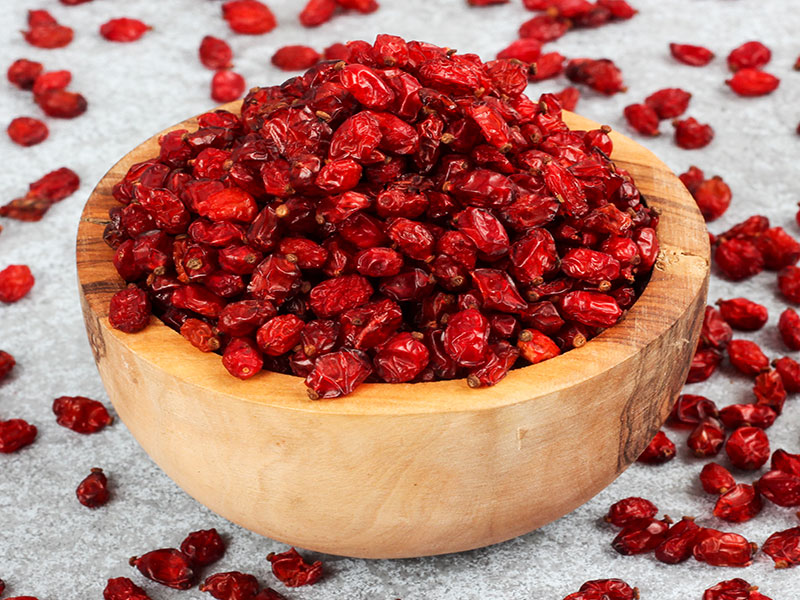Species of this genus are found in the northern, eastern, and southeastern highlands of Iran (Alborz, Qaradāḡ in Azerbaijan, ranges of Khorasan, Bārez mountain in Kermān). They reach heights of 1 to 3 m, seldom reaching 4 m, and have long branches, copious thorns, denticulate leaves, and red berries which form in clusters on the outer branches in midspring, after the yellow flowers have shed their petals, and ripen in midsummer. Dried berries of Berberis integerrima Dunge have culinary and pharmaceutical uses.
Barberries are an important ingredient in Iranian cookery, and you’re most likely to see them in a Persian restaurant or a Middle Eastern grocer’s, where they may be labelled under their Persian name, zereshk.
Iranian cooks will know barberries well as a key ingredient in certain wedding dishes, where their sourness stands as a symbol of the fact that life isn’t always a bed of roses. They’re also crucial in recipes such as tahcheen-zereshk – a dish of golden saffron rice, studded with the berries and enriched with yogurt, served with chicken. For a recipe, go to iran cuisine tours.
In traditional medicine, barberries are classed as a cold, dry substance and thought to possess the properties that check diarrhea; strengthen the stomach, liver, and heart; eliminate excess bile; relieve thirst; and cool stomach heat, internal inflammations, and blood ebullition. Mixtures of barberries with hot drugs are considered useful for relief of blockages of the liver, bowels, and intestines; for cure of dysentery caused by coldness and weakness of the liver and bowels; and generally for the treatment of patients afflicted with cold

